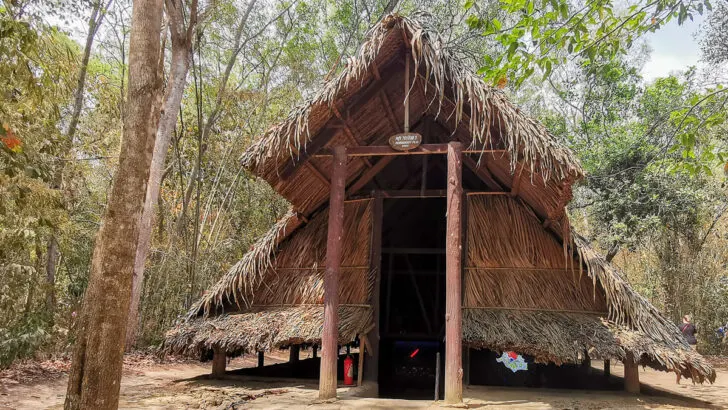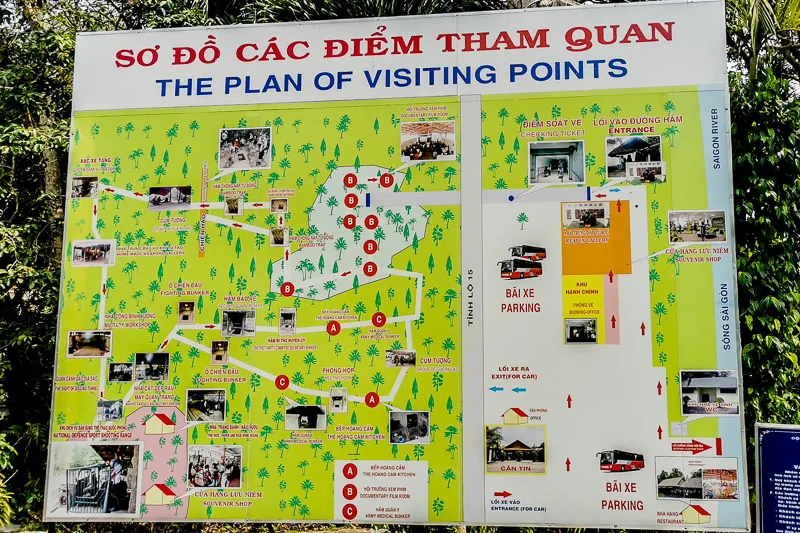Cu Chi Tunnels are extremely complex underground tunnel networks located in Cu Chi district, about 60km from Ho Chi Minh City center. The tunnels were used by Vietnamese soldiers during the Vietnam War.
Cu Chi Tunnels is a must-visit destination when you are in Ho Chi Minh City. The best time to visit the tunnels is during the dry season from November to April.
In this guide, I’ll share my experience visiting Cu Chi Tunnels as well as important travel information you need to know before visiting.
Brief Cu Chi Tunnels History
In the late 1940s, during the war against the French, the Vietnamese dug tunnels of short distances to hide and to store supplies.
In the 1960s, during the Vietnam War between the North Vietnam (Viet Cong) and the South Vietnam, the Viet Cong connected all these previously unconnected tunnels and expanded them to be over 200km long.
The Viet Cong (aka guerilla Communist Forces) used these underground tunnels to hide from enemies and bombings, transport communications and supplies, lay booby traps and mount surprise attacks, after which they could disappear underground to safety.
The war eventually ended in 1975. The year after that, 1976, the Vietnamese government made the decision to preserve the Cu Chi tunnels and turned them into war memorial parks.
Chu Chi Tunnels Location
There are 2 Cu Chu Tunnel sites: Ben Dinh (location) and Ben Duoc (location).
Ben Dinh is the more popular, and thus more crowded, site. It is closer to Ho Chi Minh City (~45km).
Meanwhile, Ben Duoc is the less popular site, which is farther from Ho Chi Minh City (~55km).
Both sites feature more or less the same exhibits and tunnels. And both sites have shooting range. However, Ben Duoc has Monument Temple but Ben Dinh doesn’t.
The site that I visited in Cu Chi Tunnels was Ben Dinh, hence, this article will focus on Ben Dinh.
Cu Chi Tunnels Opening Hours
Cu Chi Tunnels are open daily, from 7am to 5pm.
Cu Chi Tunnels Entrance Fee
Cu Chi Tunnels entrance fee is VND 125000 per person.
If you’re taking a tour, this fee is usually already included in your tour. If you’re visiting on your own (DIY), you’ll have to purchase the ticket at the counter, and this entrance fee includes tour guide.
How to Go to Chu Chi Tunnels
Ben Dinh site:
- By Bus:
- From Ben Thanh, take bus number 13 (Ben Thanh – Cu Chi) to An Suong bus station. From An Suong bus station, take bus number 122 to Tan Quy bus station. From Tan Quy bus station, take bus number 70 to Ben Dinh bus station.
- From Cho Lon bus station, take bus number 94 (Cho Lon – Cu Chi) to An Suong bus station. From An Suong bus station, take bus number 122 to Tan Quy bus station. From Tan Quy bus station, take bus number 70 to Ben Dinh tun
- By Motorbike/Car/Taxi: Head to this location
- By Tour
Ben Duoc site:
- By Bus:
- From Ben Thanh take bus route 13 (Ben Thanh – Cu Chi) to Cu Chi bus station. From Cu Chi bus station, take bus number 79 (Cu Chi – Dau Tieng) to Ben Duoc tunnels.
- From Cho Lon bus station, take bus number 94 (Cho Lon – Cu Chi) to Cu Chi bus station. From Cu Chi bus station, take bus number 79 (Cu Chi – Dau Tieng) to Ben Duoc tunnels.
- By Motorbike/Car/Taxi: Head to this location
- By Tour
If you’re taking a tour, unfortunately, you won’t know which site you will be going to. But it’s not a big deal in my opinion, both sites have relatively similar features, except the Monument Temple at Ben Duoc.
Should you visit Cu Chi Tunnels by tour or by yourself?
Here are the pros and cons:
| Tour vs DIY | Pros | Cons |
|---|---|---|
| Tour | – Everything is arranged for you – Knowledgeable English-speaking tour guide – Cheaper compared to renting private car with driver (if you are a solo traveler or couple) | – Need to follow the schedule, unable to take your own time – Spend time picking-up/dropping off many passengers – May visit commercial places |
| DIY | – Follow your own schedule, more flexibility – No need to spend time picking up/dropping off others – Cheap if traveling by public buses | – Time-consuming if traveling by public buses – No dedicated tour guide, only general tour guide |
For me and my husband, we decided to join a tour because we want to have a tour guide that can explain the history to us. And, because there are only 2 of us, joining a tour is much cheaper than renting a private car with driver.
We join this tour, which brings us to Cu Chi Tunnels and Mekong Delta Tour in one day with limo.
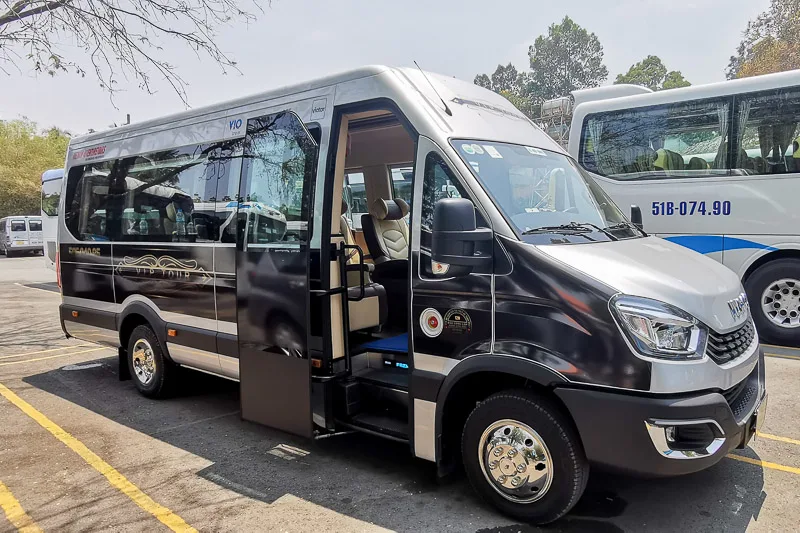
Cu Chi Tunnels Tours
With so many different tours by different operators, it’s quite tough to choose the best tour for you. I spent a lot of time analyzing various tours before I made my own booking.
To help you save time, here are my best picks:
1. Cu Chi Tunnels Half Day Tour
– most popular tour
– choose between morning or afternoon trip
– travel by bus (big group) or van (small group)
– no lunch
– best for: people who are short on time, and only want to visit Cu Chi Tunnels
2. Ho Chi Minh City & Cu Chi Tunnels Full Day Tour
– visit Cu Chi Tunnels and Ho Chi Minh City’s top sights
– travel by bus
– lunch included
– best for: people who are short on time, and want to visit the essentials places in Ho Chi Minh City in 1 day
3. Cu Chi Tunnels and Mekong Delta VIP Tour by Limousine (the one I took!)
– visit Cu Chi Tunnels & Mekong Delta in 1 day
– small group (2-12 participants)
– travel by limousine
– lunch, beer included
– best for: people who want to visit Cu Chi Tunnels & Mekong Delta in 1 day, and prefer small group (less time spent on picking/dropping passengers)
4. The History of Cu Chi Tunnels by Luxury Speedboat
– half-day trip to Cu Chi Tunnels
– travel by speedboat
– lunch included
– best for: people who want to experience the non-conventional way to Cu Chi tunnels
Cu Chi Tunnels Map
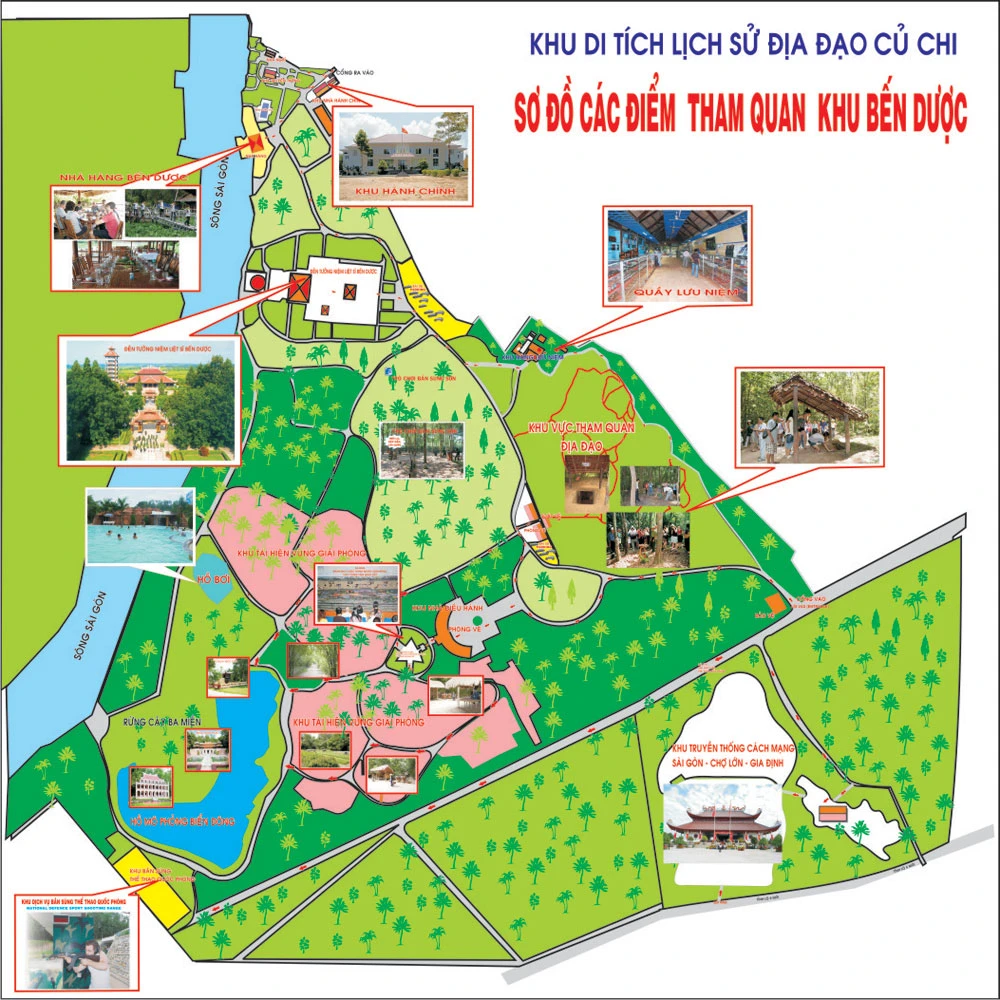
What to See and Do at Cu Chi Tunnels
We visited the Ben Dinh Site, which is a smaller site. The advantage of this site is that all of the exhibits are located quite close to each other.
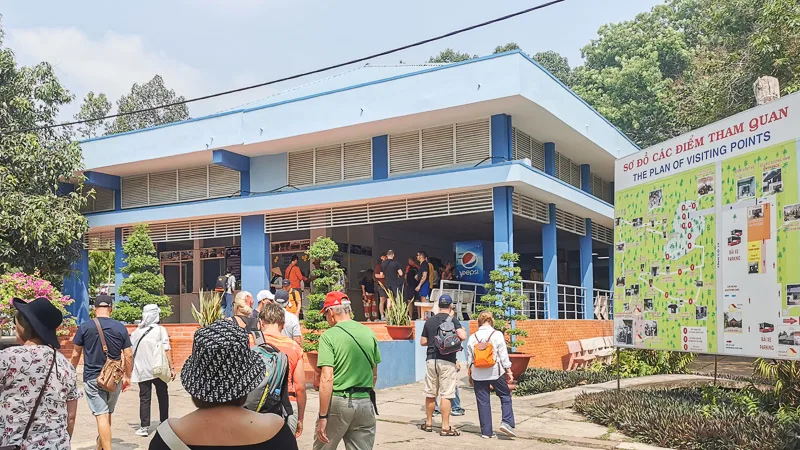
1. Weapon Gallery
Before entering the site, there’s a weapon gallery near the ticketing counter which you should not miss. Here, there are plenty of weapons and bullets on display.
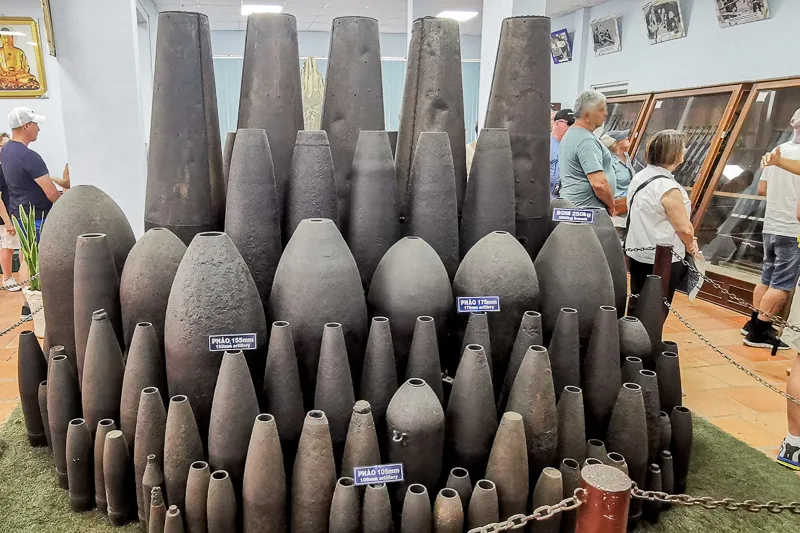
2. Understanding the Underground Tunnel
Once inside, our guide Phan explained to us about the history of Cu Chi Tunnels, and the anatomy of a tunnel network.
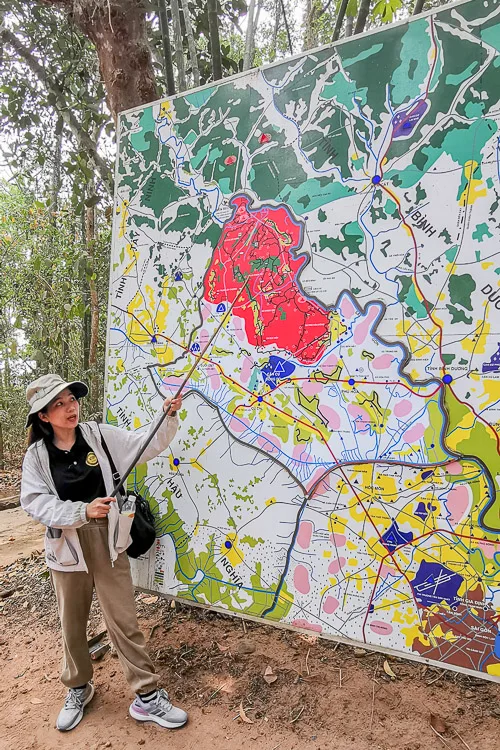
The tunnel complex has several levels. There are medical bunkers, meeting bunker, kitchen with chimney, storage (for food, medicine and weapon). The triangle bunker is for children and pregnant women.
Each level has a door to separate it from the other levels. During emergency, they can close the door so that the enemy won’t have access to their level.
There is also an underground water well, which is the source of clean water that they use for their daily lives. They don’t use river water because it may contain chemicals.
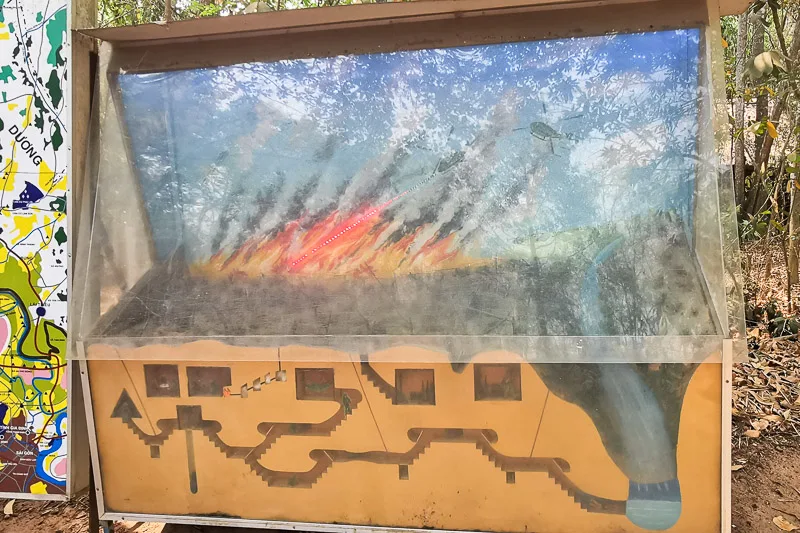
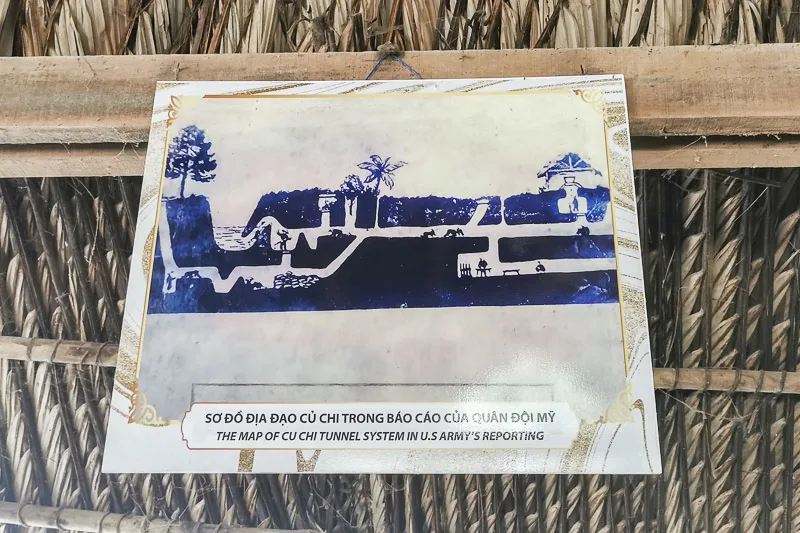
On ground level, there are many unsuspecting mounds like this which looks like just another mound. But if you observe closely, some mounds have holes which serve as ventilation for the underground tunnels.
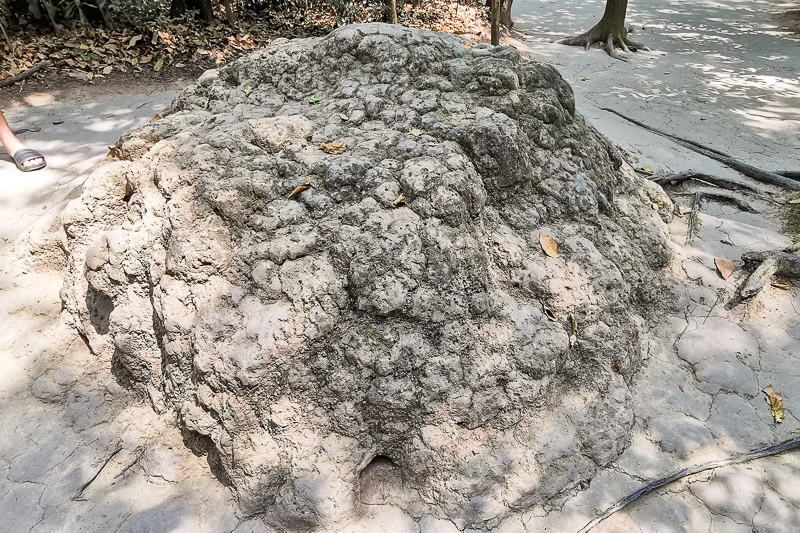
3. Documentary Film Room
The documentary film room is where you can watch a short film about how Cu Chi Tunnels were made.
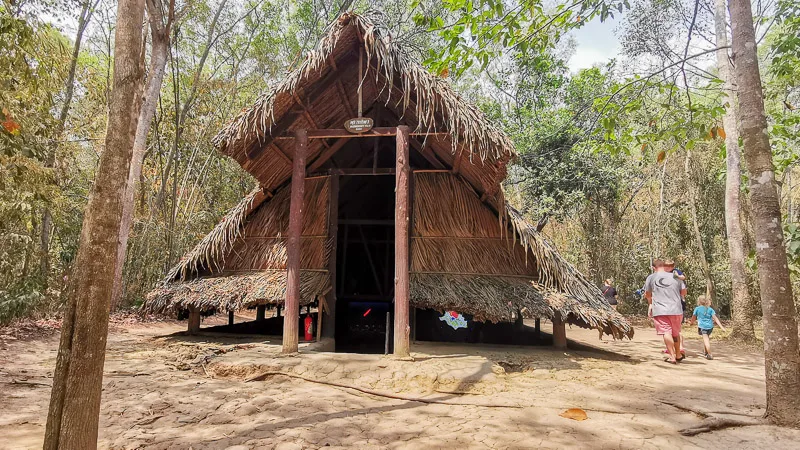
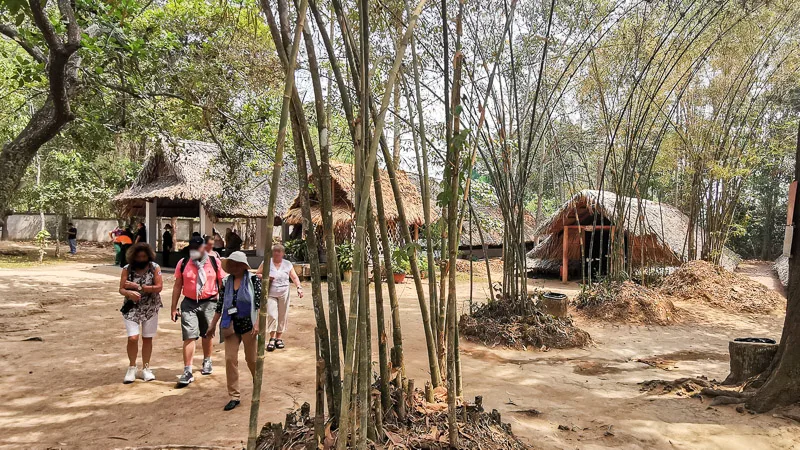
4. Tiny Hiding Spot
One of the most ‘grammable exhibit in Cu Chi Tunnel is definitely this tiny hiding spot. During the war, Vietnamese would hide inside this kind of tiny tunnel and cover it with a cover.
Curious tourists would try their luck to see if they can fit into this tiny tunnel. This tunnel is deep (for someone short like me), I didn’t even dare to try, I was worried I can’t climb out!
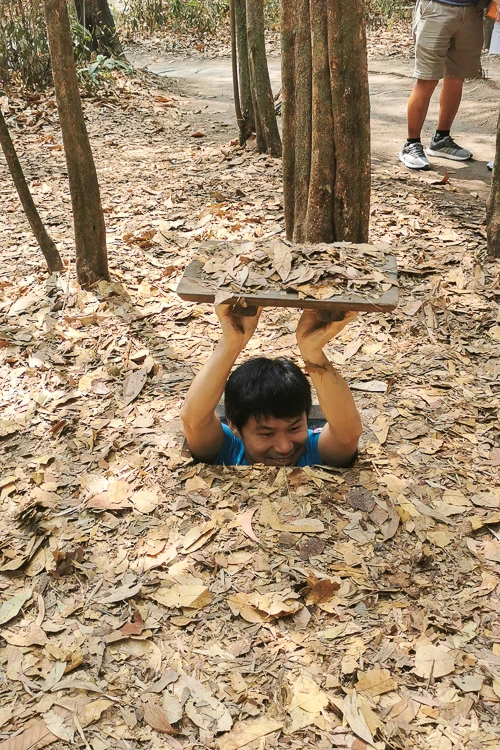
5. Traps
There were many types of traps being set up during the war time. One of them is this booby trap. If someone falls into this, they’ll need 2 person to carry them out.
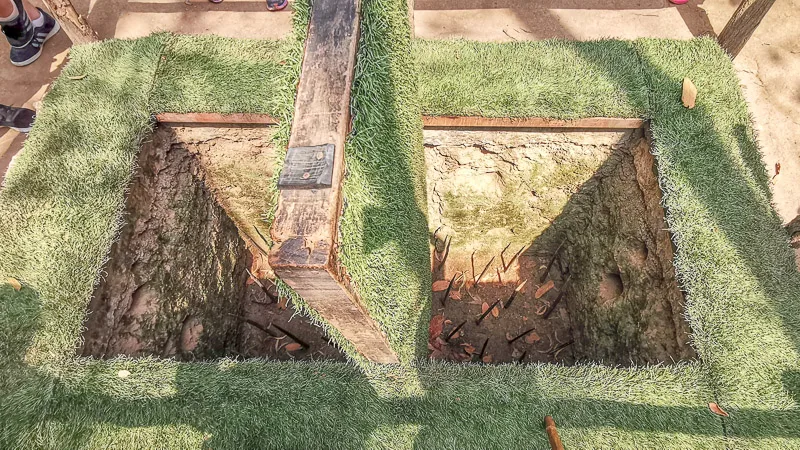
There’s an exhibit where many traps were being displayed, such as sticking trap, armpit trap, rolling trap, window trap, folding chair trap, swing up trap, fish trap, see saw trap and door trap. Our tour guide patiently explained how each trap works.
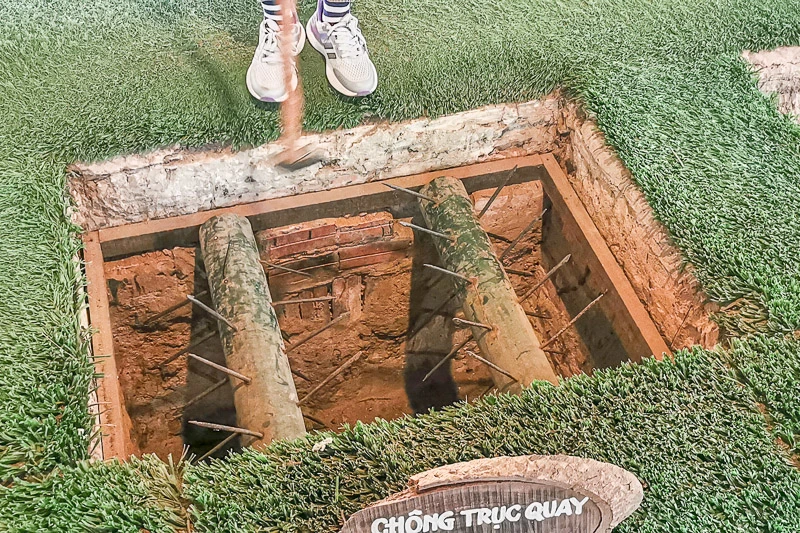
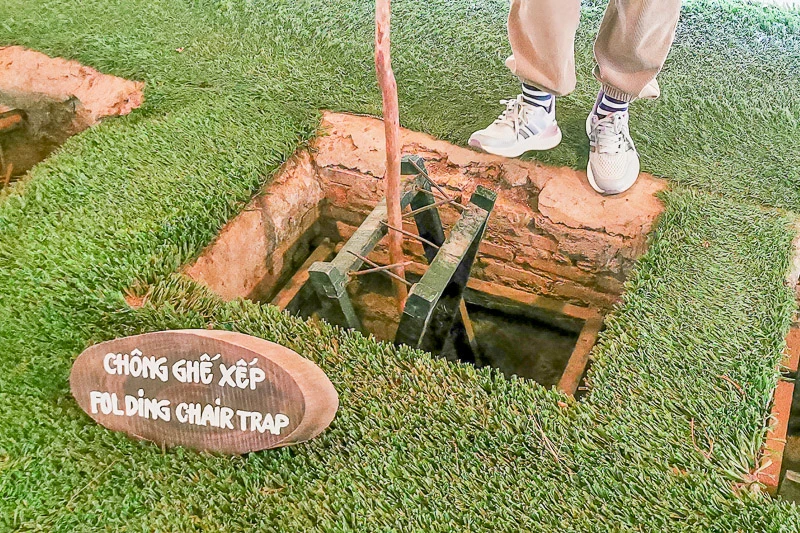
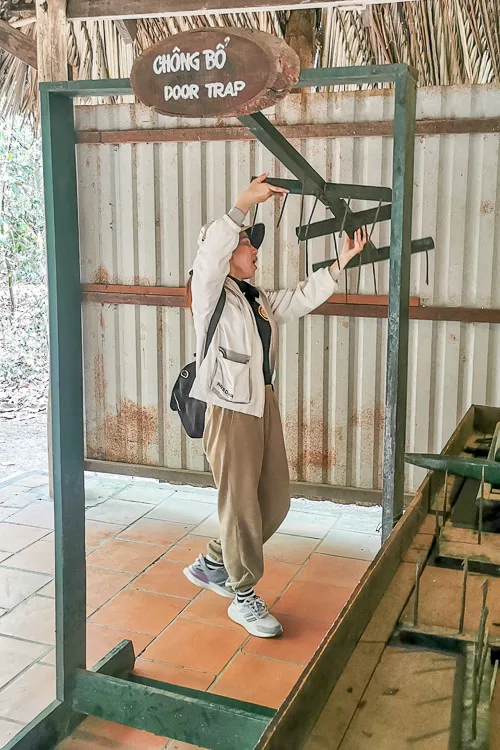
6. Group of Guerillas
Here’s a group of guerilla fighters taking a rest.
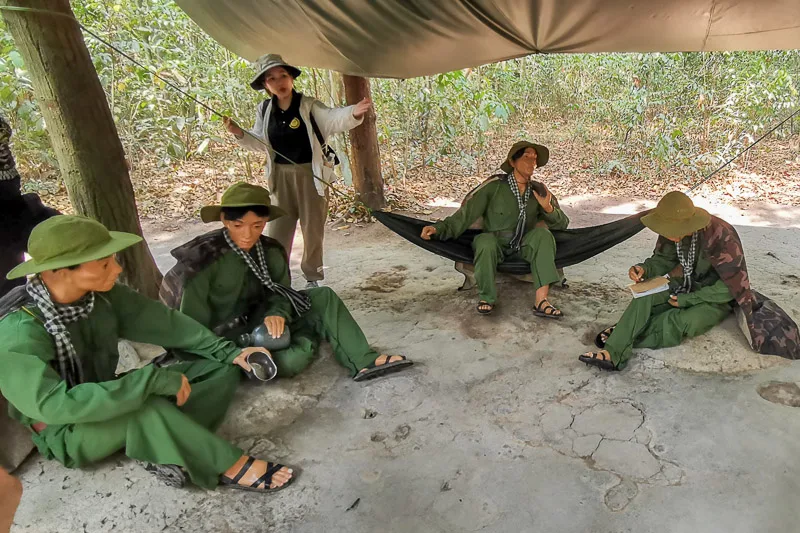
7. US Army Tank
There is also US Army Tank on display.
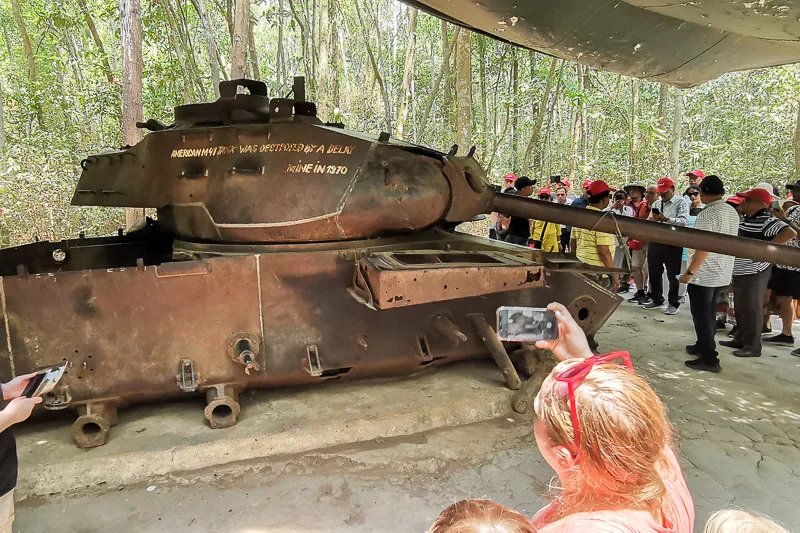
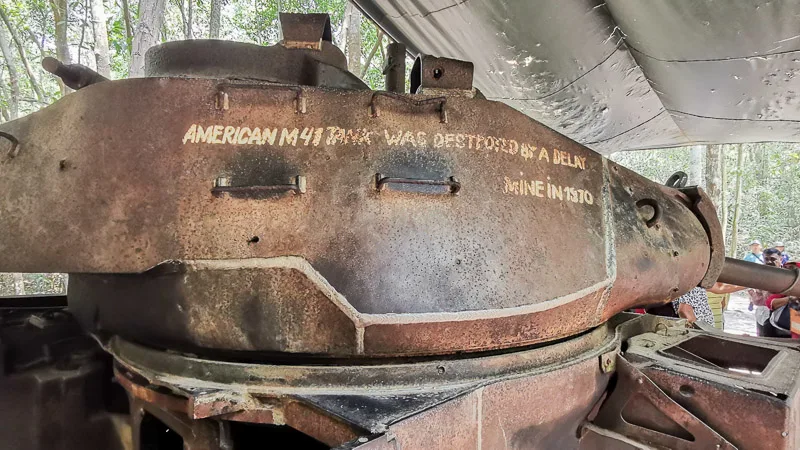
8. Military Workshop
At the military workshop, the soldiers recycle the bullets to create landmines.
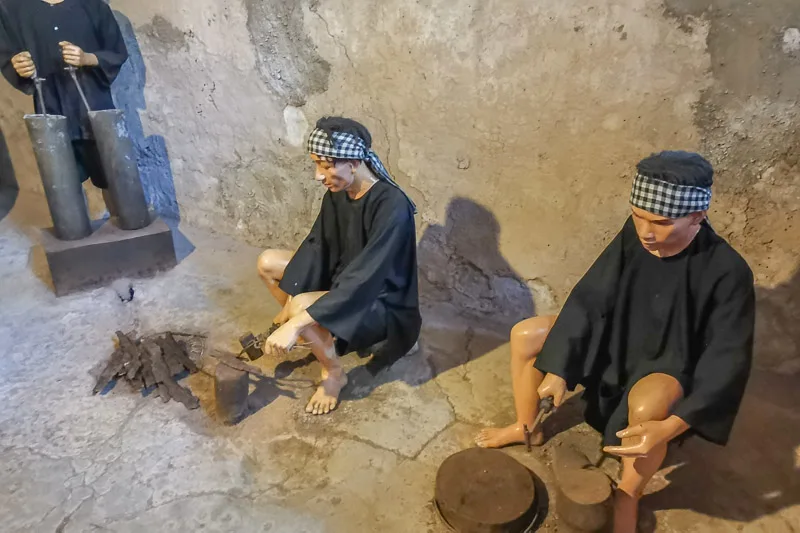
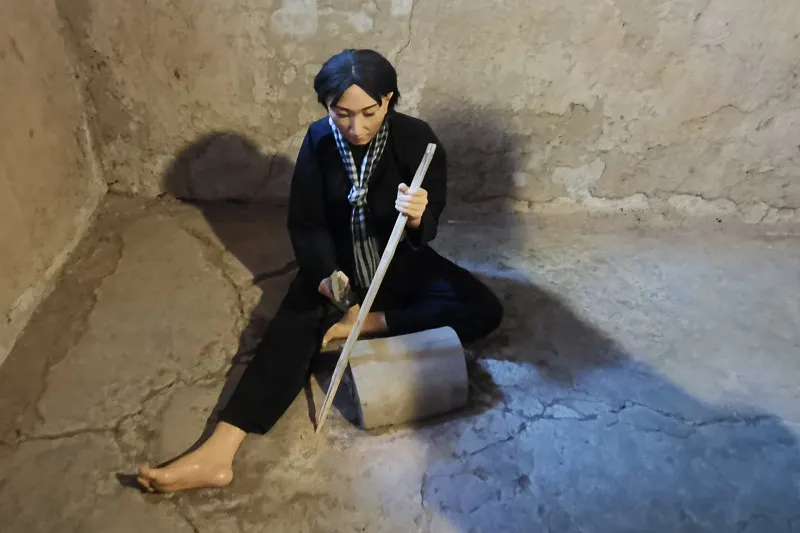
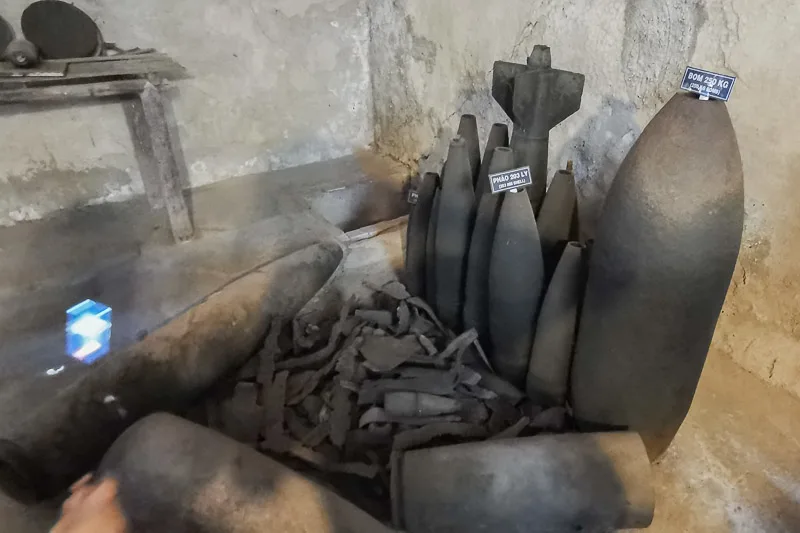
9. Sandals Making Workshop
At the sandal making workshop, a soldier figure was seen making sandals from recycled tires.
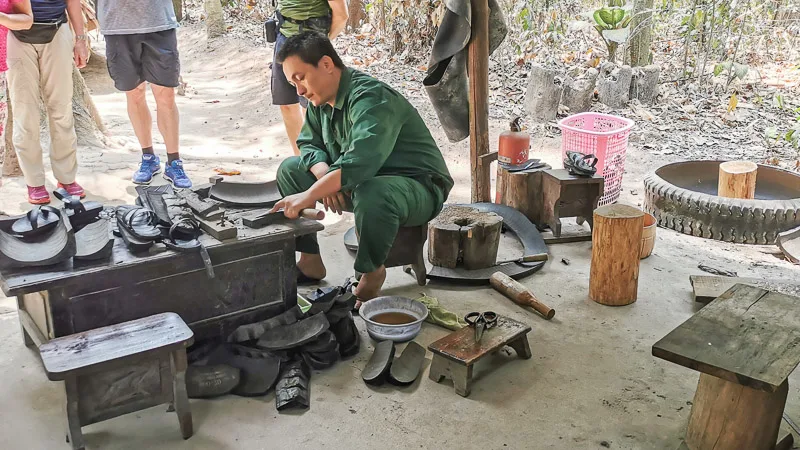
There are 2 designs. Sometimes the soldiers wear it the normal way, and sometimes they wear it backwards so that their footprints’ direction will deceit the enemies.
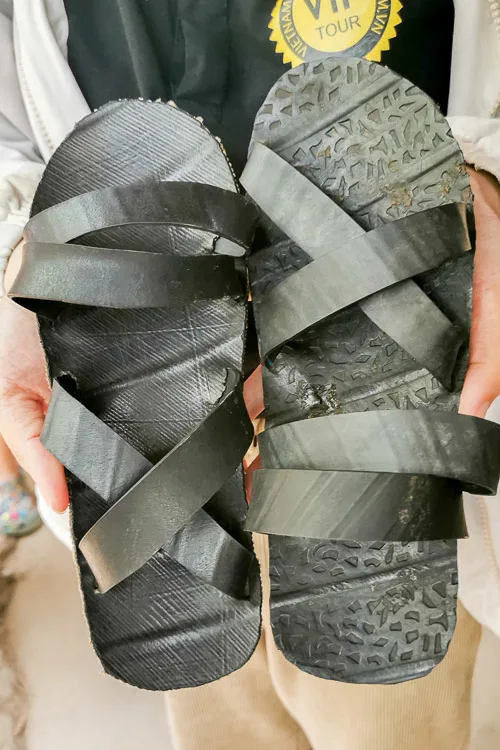
10. Cu Chi Tunnels Shooting Range
For those who want to have the experience of shooting a real gun, you should not miss the shooting range.
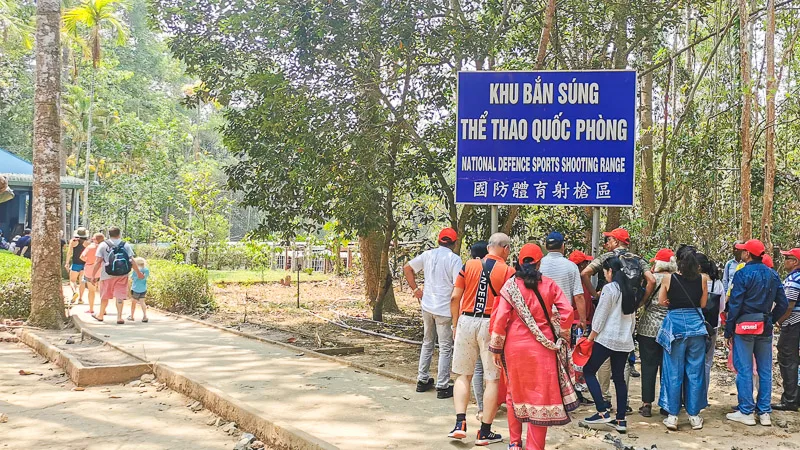
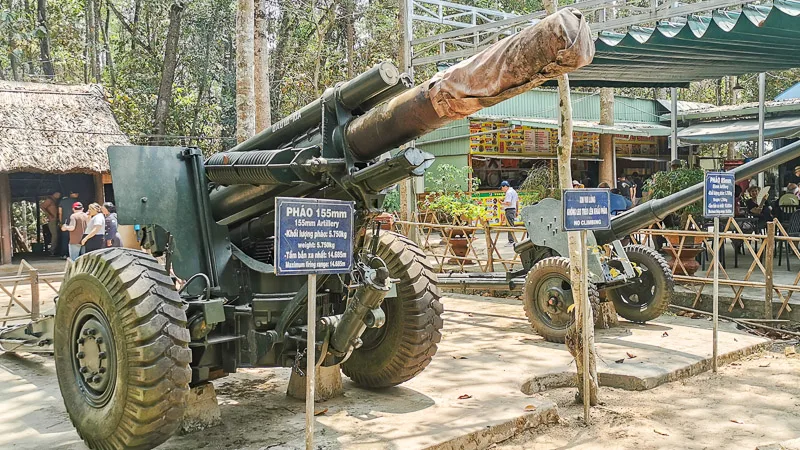
You can choose the guns that you want, eg: AK47, M16, K54, M60, carbine. The bullets are sold in a set of 10.
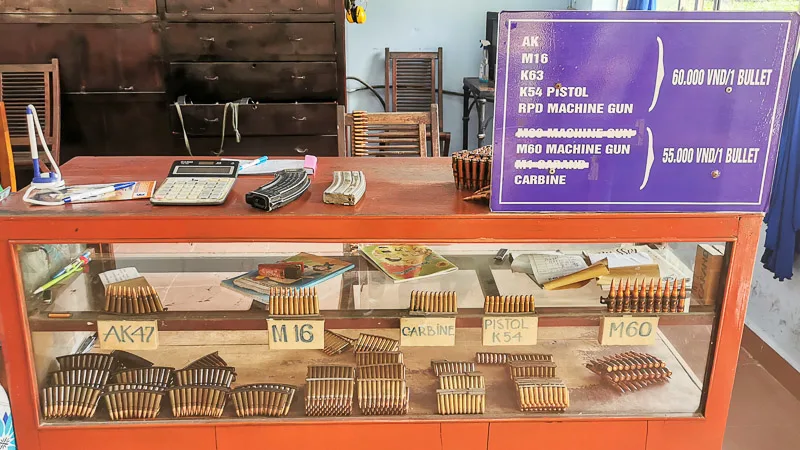
If you hit the target for at least 2 times, you’ll get rewards as follow.
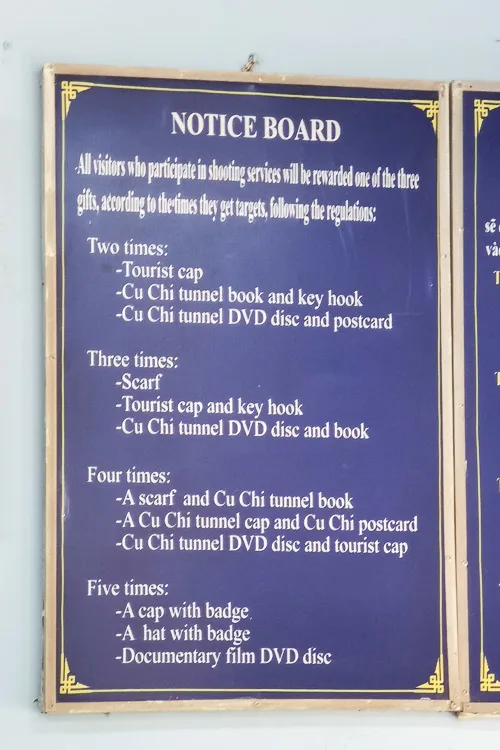
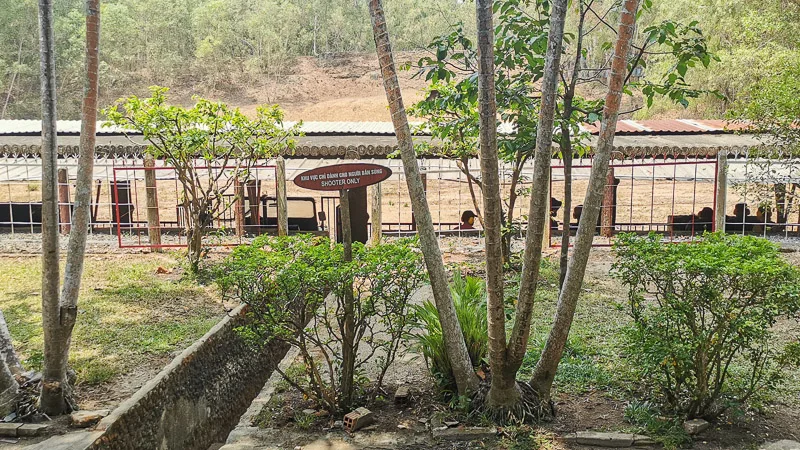
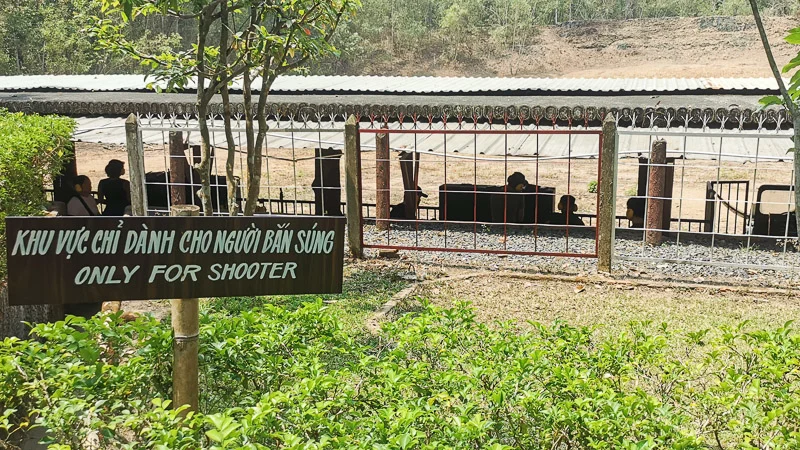
11. Souvenir Shop
After the shooting range is the souvenir shop. They sell various Vietnamese souvenirs, such as lacquerware, painting, handicrafts, etc.
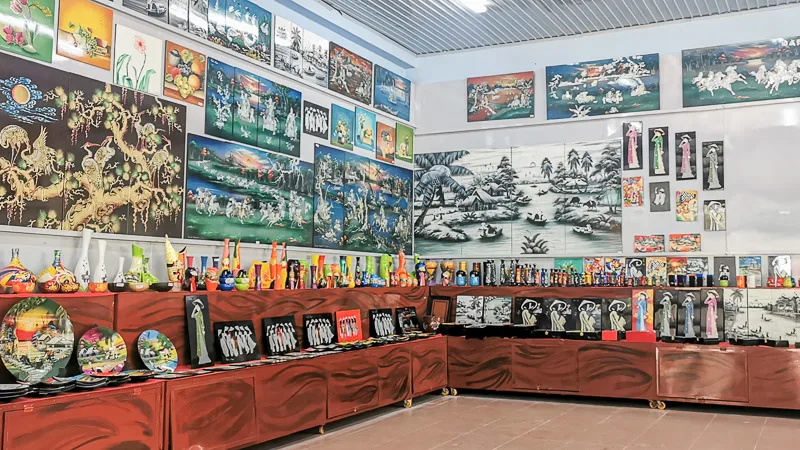
12. Food and Drink
If you’re feeling hungry or thirsty, there’s a food and drink stall to get juice or snacks. There’s even a section with tables and chairs for you to rest.
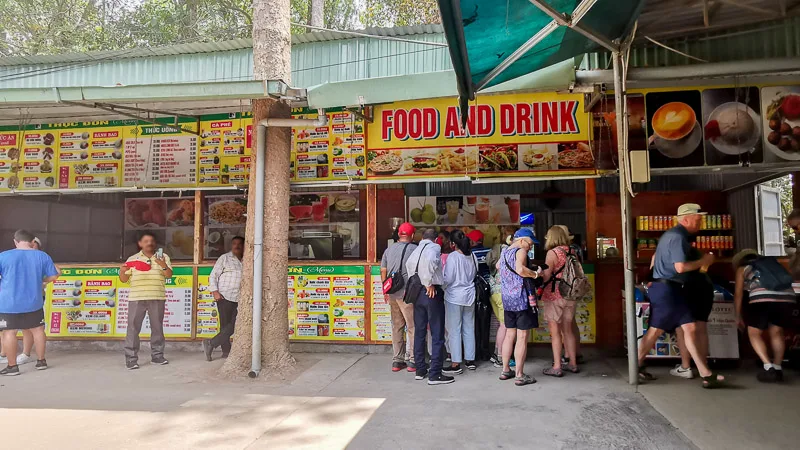
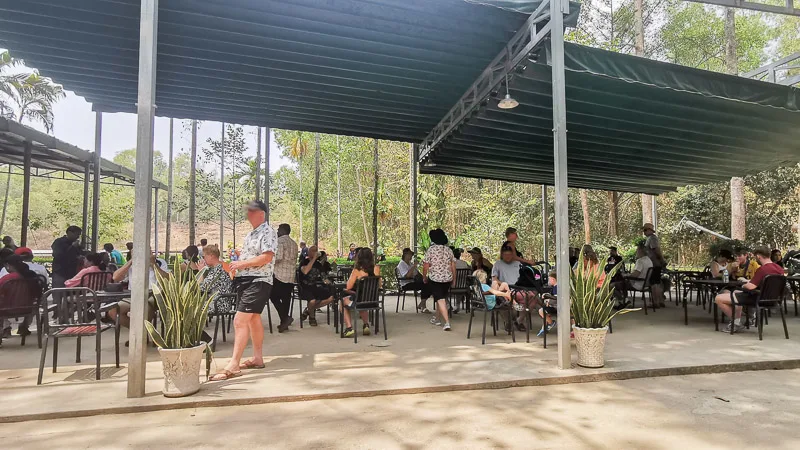
13. Fighting Bunker
Next is what I’m most excited about: the bunkers! There are various lengths that you can choose from, such as 20m, 40m, 60m and 100m. I only tried the 20m tunnel.
There are plenty of steps and you need to walk while half-squatting. It is not for everybody. And it’s totally okay if you don’t want to go in.
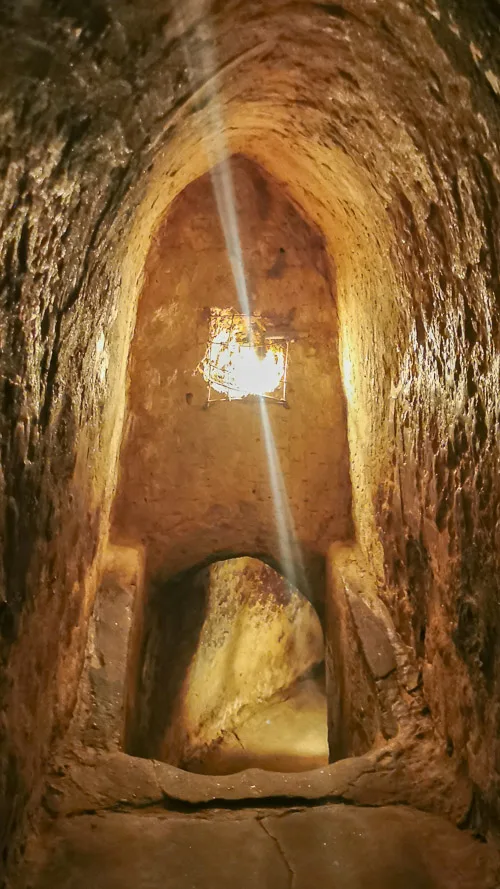
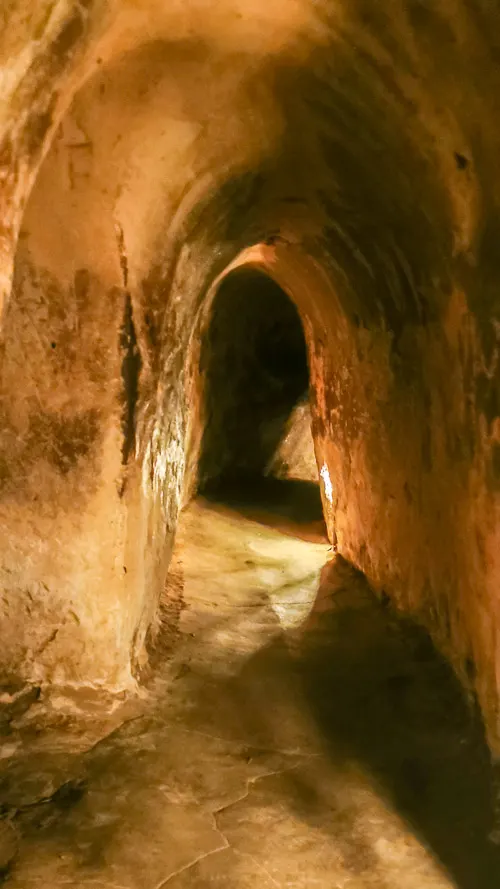
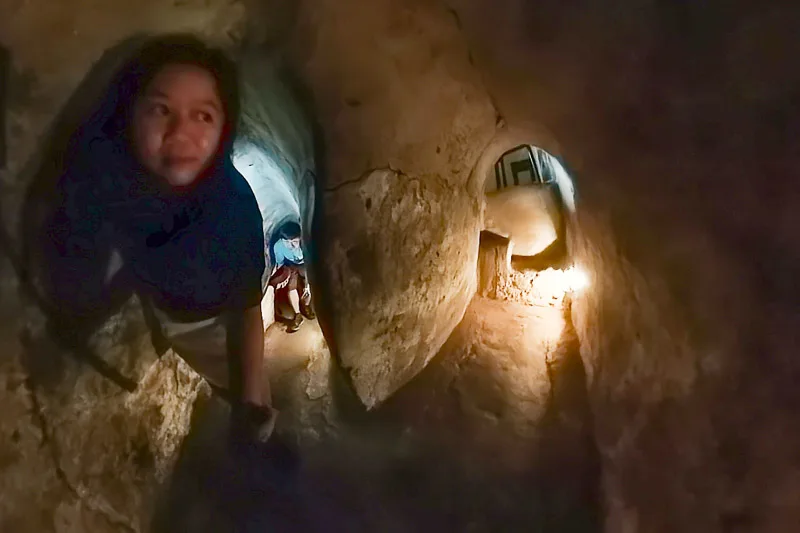
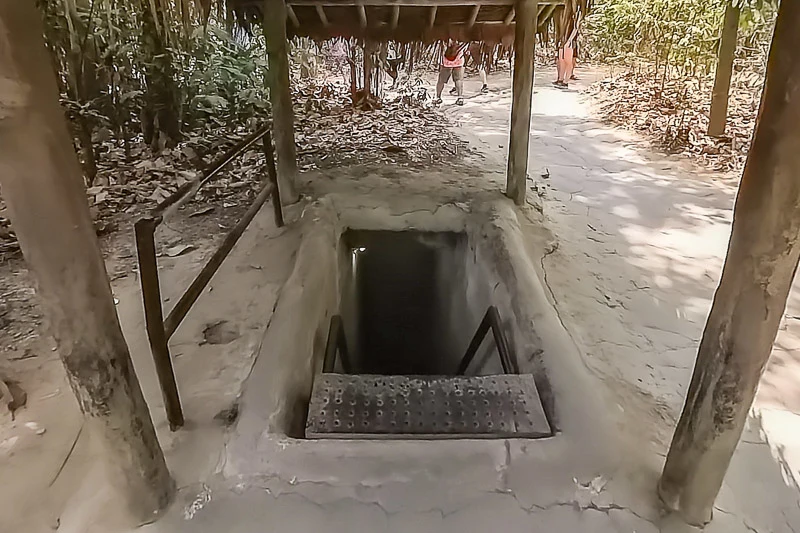
14. Medical Bunker
The medical bunker is a little bit creepy, in my opinion, because of the bed and net. The tunnel is similar to the fighting bunker, it’s small and dark.
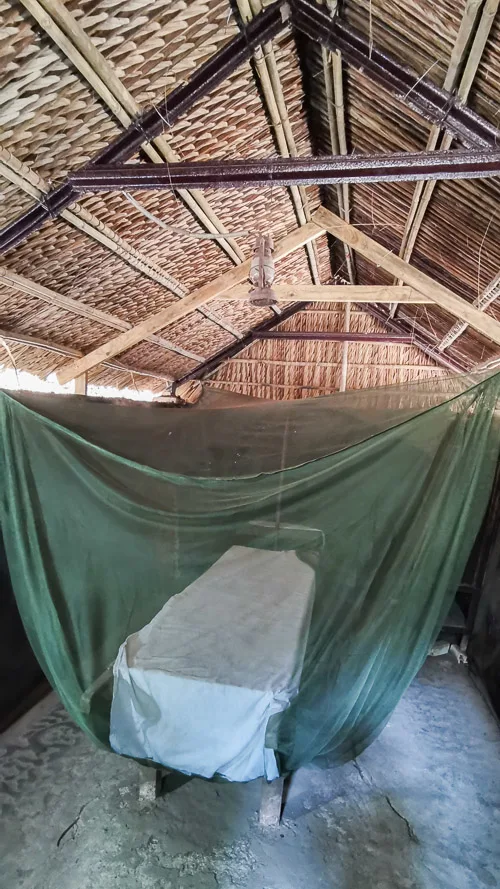
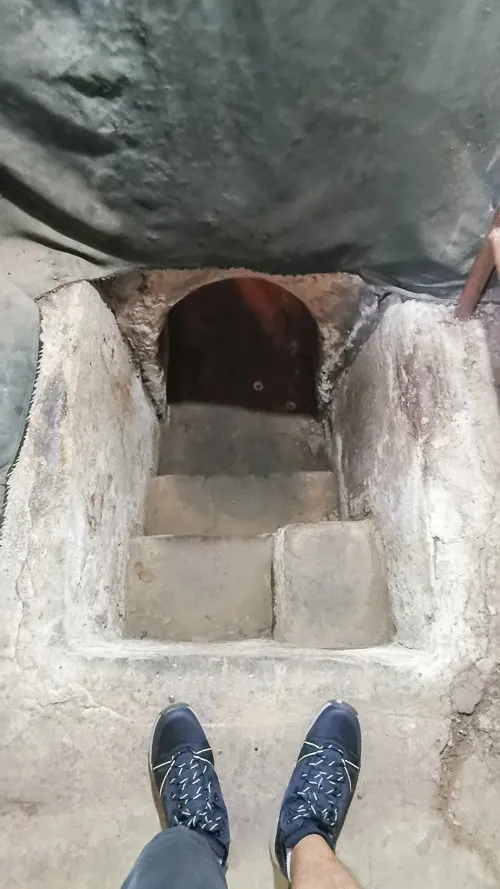
If you wonder how big these tunnels are, here’s me for comparison. I’d say the height is about 1-1.2m and width is about 0.6-0.8m.
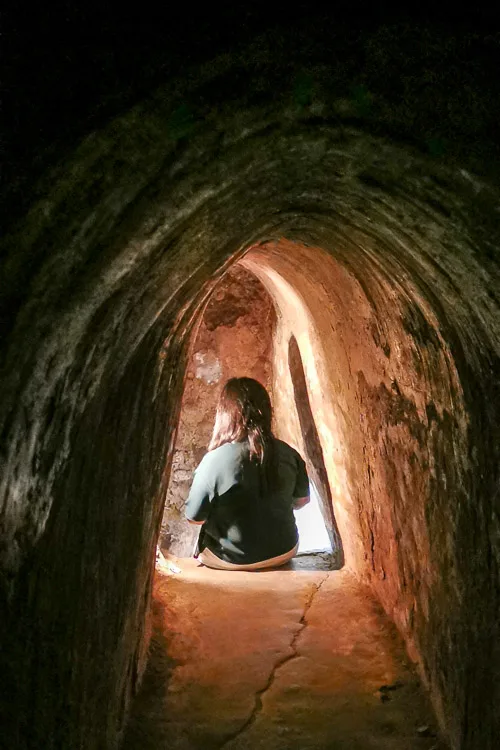
15. Eat Tapioca at the Hoang Cam kitchen
After all the bunker visit, we arrived at Hoang Cam kitchen where we were served steamed cassava root with peanut salt. These were what Vietnamese eat during the war time.
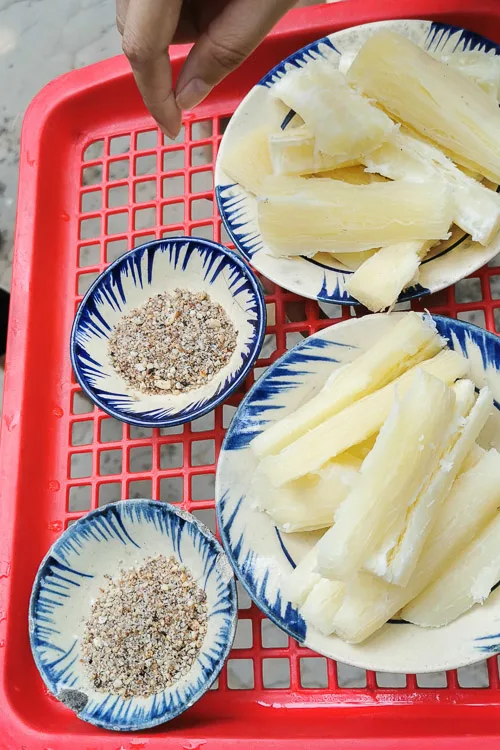
16. Lunch at Ben Dinh Restaurant
At the end of our visit to Cu Chi Tunnel, we had lunch at Ben Dinh Restaurant as part of our tour.
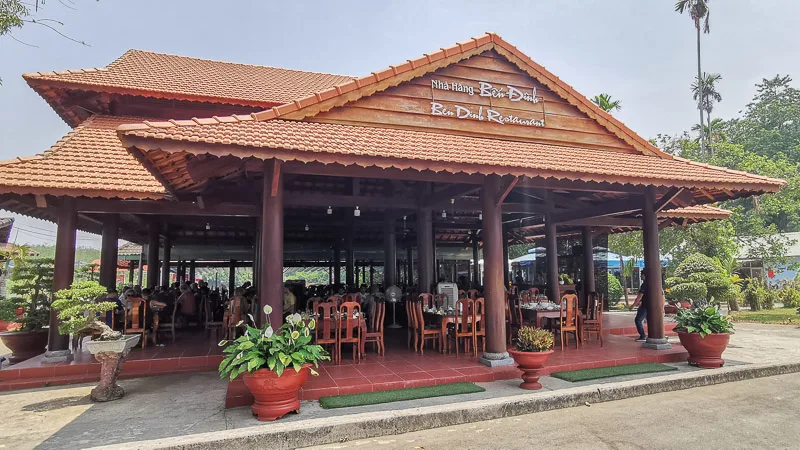
Our menu consists of steamed rice, spring roll, omelet, soup, pork, chicken, vegetable and watermelon.
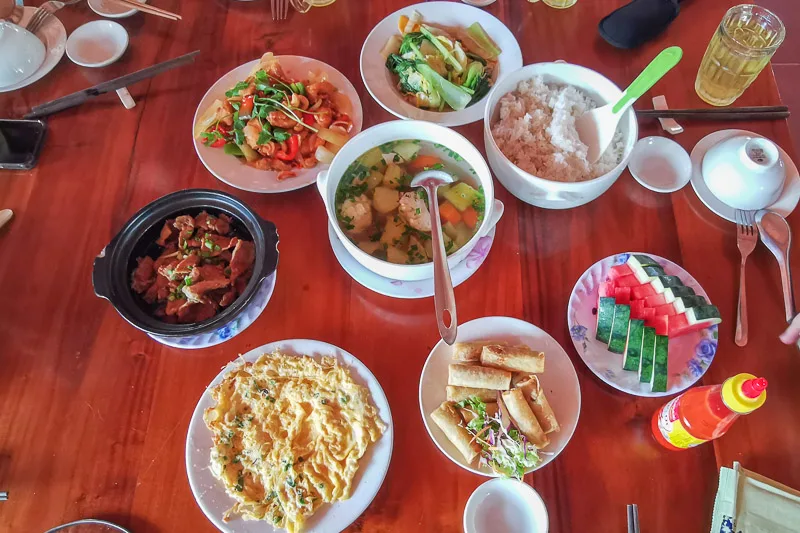
If you’re visiting Ben Duoc site, there’s also a restaurant called Nhà hàng Bến Dược (or Ben Duoc Restaurant).
Final Thoughts
Before visiting Cu Chi Tunnels, I often read negative reviews from people who said that the tunnels are not visiting because of various reasons, some of them are: it’s just tunnels, it’s too small and you can’t enter it anyway, there’s nothing much to do there.
After visiting Cu Chi Tunnels, I feel that it’s a very interesting historical site where you can learn a lot about the country. There’s only so much you can learn from reading about history. But when you visit Cu Chi Tunnels and you see with your own eyes what happened in Cu Chi during the Vietnam War, you have a deeper appreciation of the country’s past.
I highly recommend anyone visiting Saigon to visit Cu Chi Tunnels. It doesn’t matter which site you go to, the takeaways are largely the same.
Disclosure: Thank you Klook for supporting us with the tour to visit Cu Chi Tunnels and Mekong Delta.
If you like my work, you can buy me a coffee! Your support will help me to keep going!

